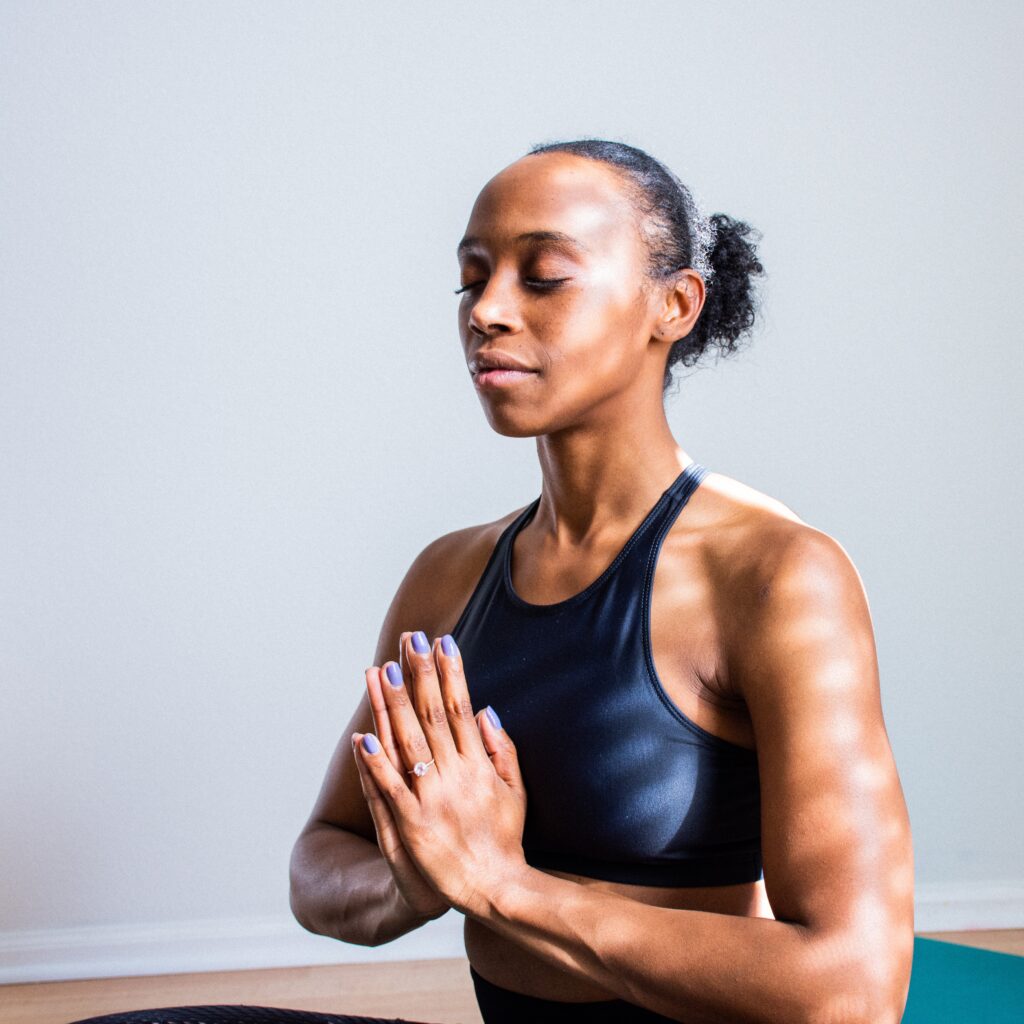Ready to get fit but not sure where to start? Look no further than “How To Choose The Best Fitness Routine For You.” This comprehensive guide will help you navigate the overwhelming world of fitness, providing you with valuable tips and insights to find the perfect workout routine that suits your individual needs and goals. Whether you’re a beginner or an experienced fitness enthusiast, this product will empower you to make informed decisions and create a workout plan that you’ll actually enjoy. Say goodbye to confusion and hello to a healthier, happier you!
Understanding Your Fitness Goals
Define Your Fitness Goals
When it comes to starting a fitness journey, the first step is to define your goals. This will give you a clear direction and a purpose to work towards. Are you looking to lose weight, build muscle, improve your cardiovascular endurance, or simply lead a healthier lifestyle? Take some time to reflect on what you truly want to achieve from your fitness journey.
Short-Term vs Long-Term Goals
It’s important to distinguish between short-term and long-term goals. Short-term goals are what you hope to achieve within a few weeks or months, whereas long-term goals are what you aspire to accomplish over a more extended period, such as a year or more. Setting both types of goals allows you to stay motivated and track your progress effectively.
Reality Check: Is Your Goal Achievable?
While it’s essential to have ambitious fitness goals, it’s equally important to be realistic about what you can achieve. Consider your current fitness level, lifestyle, and any potential limitations you may have. Setting an unrealistic goal may only lead to frustration and disappointment. By setting achievable goals, you’ll be more likely to stay committed to your fitness routine and experience success along the way.
Assessing Your Fitness Level
Importance of Knowing Your Current Fitness Level
Before diving into any fitness routine, it’s crucial to assess your current fitness level. This will not only help you identify any areas that need improvement but also serve as a baseline to track your progress. Knowing where you stand in terms of cardiovascular endurance, strength, and flexibility will allow you to tailor your workout routine to meet your specific needs.
Ways to Measure Your Fitness Level
There are several ways to measure your fitness level. One popular method is to perform a Complete Body Analysis. This includes measuring your body composition, such as fat percentage, and assessing your cardiovascular fitness, muscular strength, and flexibility through various tests. Alternatively, you can use fitness trackers or apps that provide data on your heart rate, steps, and workout intensity, giving you insights into your overall fitness level.
Interpreting the Results
Once you have gathered the necessary data regarding your fitness level, it’s crucial to understand the results. This will help you identify areas that require improvement and determine what type of exercises or routines will be most beneficial for you. If, for example, your cardiovascular fitness is lacking, focusing on activities such as running or cycling can help improve your endurance. Similarly, if you have weak muscles, strength training exercises should be incorporated into your routine.

Considering Your Health Factors
Know Your Medical History
Understanding your medical history is paramount when it comes to choosing a fitness routine that suits your needs. Certain conditions or injuries may require modifications to your workouts or the inclusion of specific exercises. For example, if you have a history of back pain, exercises that strengthen the core and improve posture may be beneficial. Consulting with a healthcare professional or personal trainer can provide valuable insights into any limitations you should consider.
Current Health Conditions
In addition to your medical history, it’s important to take into account any current health conditions you may have. Conditions such as asthma, arthritis, or diabetes can impact the type and intensity of exercises you should engage in. Consult with your healthcare provider to discuss any necessary precautions or modifications that should be made to your fitness routine.
Impact of Age and Gender on Your Fitness
Age and gender can play a significant role in determining the most suitable fitness routine for you. As we age, our bodies undergo changes in muscle mass, bone density, and metabolic rate. It’s crucial to choose exercises that address these changes and promote overall health and longevity. Additionally, gender-specific considerations, such as hormonal influences and differences in muscle composition, may impact the effectiveness of certain workouts. Understanding these factors will help you make informed choices when selecting your fitness routine.
Identifying Your Interests
Popular Types of Fitness Programs
There is a vast array of fitness programs available, catering to various interests and goals. Some popular options include aerobic exercises like running or dancing, strength training using weights or resistance bands, yoga for flexibility and mindfulness, and high-intensity interval training (HIIT) for a challenging workout. Other options include Pilates, swimming, cycling, and martial arts. Exploring different programs will help you identify what interests you the most.
Pros and Cons of Different Fitness Routines
Each fitness routine has its own unique advantages and disadvantages. For example, aerobic exercises are excellent for cardiovascular health and burning calories, but they may not be as effective for building muscle. On the other hand, strength training can help increase muscle mass and bone density, but it may not provide the same cardiovascular benefits. Consider the pros and cons of each type of workout and determine which aligns best with your goals and preferences.
Hobbies and Interests as a Factor in Choosing a Fitness Routine
Incorporating your hobbies and interests into your fitness routine can greatly enhance your motivation and enjoyment. If you love nature, activities like hiking or trail running can provide a refreshing workout experience. If you enjoy music and dance, Zumba or dance fitness classes can be a fun and engaging way to get fit. By finding a fitness routine that aligns with your hobbies and interests, you’ll be more likely to stick with it long-term.

Scheduling and Time Management
Daily and Weekly Time You Can Dedicate to Fitness
To ensure the success of your fitness routine, it’s important to realistically assess the time you can dedicate to exercise on a daily and weekly basis. Consider your work schedule, personal commitments, and any other responsibilities. Aim for at least 150 minutes of moderate-intensity aerobic activity or 75 minutes of vigorous-intensity aerobic activity per week, along with muscle-strengthening exercises at least two days per week. Determine how many days and how much time you can realistically set aside for your fitness routine.
Incorporating Fitness into Your Current Lifestyle
Integrating fitness into your current lifestyle is crucial for long-term adherence. Look for opportunities to incorporate physical activity throughout your day, such as taking the stairs instead of the elevator or going for a walk during lunch breaks. Additionally, you can find creative ways to combine exercise with activities you already enjoy, such as cycling to work or joining a recreational sports league. By making fitness a seamless part of your lifestyle, it will become a sustainable habit.
Best Time of the Day for Exercising
The best time of day to exercise is ultimately a personal preference. Some people prefer to start their day with a workout to boost energy and set a positive tone for the day ahead. Others find that exercising in the afternoon or evening helps them unwind and relieve stress. Experiment with different times of day to see when you feel most energized and motivated to exercise. Consistency is key, so choose a time that you can commit to on a regular basis.
Choosing the Exercise Type
Cardio Workouts
Cardiovascular exercises, also known as cardio or aerobic workouts, are essential for improving heart health, increasing endurance, and burning calories. Options include activities like running, brisk walking, cycling, swimming, dancing, or using cardio machines such as treadmills or ellipticals. When selecting a cardio workout, consider factors such as impact on joints, overall intensity, and personal preference. Aim to incorporate at least 150 minutes of moderate-intensity or 75 minutes of vigorous-intensity cardio exercises into your weekly routine.
Strength Training
Strength training exercises play a crucial role in building and maintaining muscle mass, boosting metabolism, and enhancing overall strength. Options for strength training include using free weights, weight machines, resistance bands, or bodyweight exercises like push-ups or squats. To maximize benefits, aim for two or more days of strength training each week, targeting all major muscle groups. Start with lighter weights and gradually increase the resistance as your strength improves.
Flexibility Exercises
Flexibility exercises are vital for maintaining mobility, preventing injuries, and improving posture. Options for increasing flexibility include stretching exercises, yoga, Pilates, or Tai Chi. These activities help lengthen and stretch muscles, increase range of motion, and promote relaxation. Incorporate flexibility exercises into your routine at least two or three days a week, focusing on major muscle groups.
Balance Exercises
Balance exercises are essential for stability, reducing the risk of falls, and improving posture. Examples of balance exercises include standing on one leg, heel-to-toe walk, Tai Chi, or yoga poses that challenge balance. As you age, it becomes increasingly important to include balance exercises in your routine. Aim for two or three days of balance exercises per week, gradually increasing the difficulty as your balance improves.

Involving a Fitness Professional
Benefits of Having a Fitness Trainer
Engaging the services of a fitness trainer or personal coach can provide numerous benefits on your fitness journey. A qualified professional can offer expertise, guidance, and motivation, ensuring that your workouts are effective and safe. They can also assist in setting realistic goals, tracking progress, and providing accountability. A fitness trainer can tailor workouts to your specific needs, whether you’re a beginner looking to learn proper form or an experienced individual targeting specific fitness goals.
Choosing a Qualified Fitness Trainer
When selecting a fitness trainer, it’s important to choose someone who is qualified, experienced, and knowledgeable. Look for certifications from reputable organizations such as the American Council on Exercise (ACE), National Academy of Sports Medicine (NASM), or the International Sports Sciences Association (ISSA). Additionally, consider a trainer’s experience working with individuals who have similar goals or fitness levels as you. Reading reviews and asking for recommendations from friends or family can also help you find a suitable fitness trainer.
Creating a Fitness Plan with a Professional
Working with a fitness professional allows you to create a personalized fitness plan tailored to your specific goals, needs, and abilities. They can help you design a well-rounded routine that incorporates the right balance of cardiovascular exercises, strength training, flexibility work, and other components that align with your objectives. Set aside time with your fitness trainer to discuss your goals, preferences, and any limitations you may have. Together, you can create a comprehensive plan that ensures you’re on track to achieve your desired fitness results.
Setting Up a Home Gym vs Joining a Fitness Club
Benefits of Having a Home Gym
Having a home gym offers several advantages. Firstly, it provides convenience and flexibility, allowing you to work out at any time without leaving your house. It eliminates the need to commute to a fitness club, saving you time and money. Additionally, a home gym offers privacy, especially for those who may feel self-conscious exercising in public. Lastly, having a home gym allows you to customize your exercise environment, including equipment selection and personal preferences.
Pros and Cons of Joining a Fitness Club
Joining a fitness club also has its benefits. Fitness clubs provide access to a wide range of equipment, classes, and amenities, such as swimming pools or saunas. They offer a social aspect, allowing you to connect with others who share similar fitness goals. Fitness clubs often have qualified instructors and trainers available for guidance and support. However, membership fees, crowds during peak hours, and the need to travel to the club may be potential downsides to consider.
Making the Most Out of Your Chosen Setting
Whether you choose to set up a home gym or join a fitness club, it’s important to make the most out of your chosen setting. Create a dedicated space for your workouts if you opt for a home gym, ensuring it is clean, well-ventilated, and free from distractions. Purchase equipment that suits your needs and aligns with your fitness goals. If you decide to join a fitness club, take advantage of the amenities, classes, and expertise available. Regularly review your goals and adjust your fitness routine to maximize the benefits of your chosen setting.

Nutrition and Hydration
Balanced Diet for Fitness
Nutrition plays a crucial role in achieving your fitness goals. Fueling your body with the right nutrients ensures optimal performance, recovery, and overall health. Aim for a balanced diet that includes a variety of fruits, vegetables, whole grains, lean proteins, and healthy fats. Stay hydrated by drinking adequate amounts of water throughout the day, and limit the consumption of processed foods, sugary beverages, and saturated fats.
Hydration and Fitness
Proper hydration is essential for maintaining optimal performance during exercise. Dehydration can lead to decreased energy levels, muscle cramps, and impaired cognitive function. Stay hydrated by drinking water before, during, and after your workouts. The amount of water needed may vary depending on factors such as intensity, duration, and environmental conditions. Listen to your body and drink when you feel thirsty, and aim to consume at least 8 cups (64 ounces) of water daily.
Pre-Workout and Post-Workout Meals
Fueling your body before and after your workouts is essential for maximizing performance and aiding in recovery. Before exercising, opt for a small meal or snack that combines carbohydrates and protein. This could include a banana with almond butter, Greek yogurt with granola, or a turkey sandwich on whole wheat bread. Post-workout, prioritize consuming a combination of carbohydrates and protein within 30 minutes to help replenish glycogen stores and support muscle repair. Examples of post-workout meals include a protein shake with fruit, a chicken and vegetable stir-fry, or a quinoa salad with grilled salmon.
Monitoring Your Progress
Keeping a Fitness Journal
Keeping a fitness journal can be an effective tool for monitoring your progress and staying motivated. Use a journal or a digital app to track your workouts, recording details such as the exercises performed, sets, reps, and weights used. You can also note how you felt during the workout, any improvements you experienced, or any challenges you encountered. Looking back on your journal can be a great source of encouragement as you witness your progress over time.
Periodic Fitness Assessment
Conducting periodic fitness assessments allows you to measure your progress accurately and make informed adjustments to your routine. This can include reassessing your fitness level through tests or measurements, such as timing your mile run, measuring your body composition, or evaluating your strength and flexibility. Regularly scheduling these assessments, such as every three to six months, provides you with tangible data to see how far you’ve come and identify areas that may require more attention.
Modifying Your Fitness Routine Based on Progress
As you progress on your fitness journey, it’s important to periodically reassess and modify your fitness routine. This helps prevent plateaus and ensures continued improvement. Adjusting variables such as exercise intensity, duration, or frequency can keep your workouts challenging and prevent boredom. If you have surpassed your initial goals, it may be time to set new, more ambitious targets. Consult with a fitness professional if you need guidance on how to modify your routine effectively.
In conclusion, choosing the best fitness routine for you requires careful consideration of various factors. By understanding your goals, assessing your fitness level, considering your health factors, identifying your interests, managing your time effectively, choosing the right exercise type, involving a fitness professional, selecting the most suitable setting, prioritizing nutrition and hydration, monitoring your progress, and making necessary modifications along the way, you can create a comprehensive and personalized fitness plan that will help you achieve your desired results. Remember, fitness is a journey, so enjoy the process and make it a part of your lifestyle for long-term success in your pursuit of optimal health and well-being.


